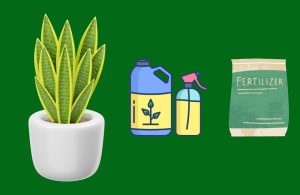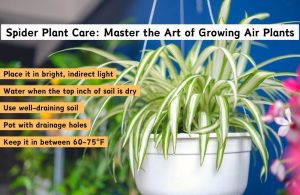This list is subject to be updated on a regular basis.
Welcome to our comprehensive glossary of terms related to indoor plant care! Whether you’re a seasoned plant parent or just beginning your journey into the world of indoor gardening, understanding the lingo is essential to care for your leafy friends properly.
This glossary covers a wide range of topics, from basic plant care terminology to more specific issues and techniques, providing valuable resources to help your plants thrive. So let’s dive in and expand your indoor plant care vocabulary!
- Acclimation: The process of gradually adjusting a plant to new environmental conditions, such as light levels, temperature, or humidity, to minimize stress and prevent shock.
- Aeration: The process of improving air circulation and drainage around plant roots by loosening soil or adding specific materials.
- Air-purifying plants: Indoor plants that have been found to remove certain pollutants from the air, potentially improving indoor air quality. Examples include snake plants, spider plants, and pothos.
- Aphids: Small, soft-bodied insects that feed on plant sap, often found in clusters on indoor plants, causing damage such as yellowing leaves and stunted growth.
- Bottom watering: A technique in which water is added to a tray or saucer under a plant’s pot, allowing the soil to absorb moisture from below, which can help prevent overwatering and reduce the risk of fungal diseases.
- Bright, indirect light: Light that reaches a plant without direct sun exposure, typically achieved by placing the plant near a window with a sheer curtain or by using a grow light.
- Cacti and succulents: Drought-tolerant plants that store water in their leaves, stems, or roots, often requiring less frequent watering and well-draining soil mixes. Popular indoor varieties include jade plants, aloe vera, and various species of cacti.
- Deadheading: The removal of spent flowers from a plant to encourage further blooming and maintain a tidy appearance.
- Drainage: The ability of soil or potting mix to allow excess water to flow away from plant roots, preventing waterlogged conditions and root rot.
- Drought-tolerant: Plants that can withstand extended periods of low water availability, making them well-suited for indoor environments where consistent watering may be challenging.
- Fertilizer: A substance added to soil or potting mix to provide plants with essential nutrients for growth, such as nitrogen, phosphorus, and potassium.
- Grow light: An artificial light source designed to mimic natural sunlight, used to provide indoor plants with the necessary light for photosynthesis and growth when natural light is insufficient.
- Guttation: A natural process in which some plants release excess water through small openings on their leaf edges, often mistaken for a sign of overwatering.
- Humidity: The amount of moisture in the air, which can be crucial for the health of some indoor plants, especially tropical varieties.
- Hydroponics: A method of growing plants without soil, using a nutrient-rich water solution to deliver essential nutrients directly to the plant roots. This method can be used for growing certain indoor plants.
- Leaf drop: A common issue faced by indoor plants, where leaves fall off due to factors such as overwatering, underwatering, temperature fluctuations, or inadequate light.
- Leaf shine: A product or homemade solution used to clean and polish the leaves of indoor plants, improving their appearance and helping to remove dust and debris that can hinder photosynthesis.
- Legginess: A term used to describe plants with long, spindly stems and sparse foliage, often caused by insufficient light or overcrowding. Pinching back and proper pruning can help address legginess.
- Low light: A level of light that is dimmer than bright, indirect light but still allows plants to grow, typically found in rooms with north-facing windows or away from windows.
- Mealybugs: Small, white, cottony-looking insects that feed on plant sap and can cause damage to indoor plants, often requiring treatment with insecticidal soap or rubbing alcohol.
- Monstera deliciosa: Also known as the Swiss cheese plant, a popular indoor plant known for its large, glossy leaves with distinctive holes or fenestrations.
- Neem oil: A natural pesticide derived from the neem tree, commonly used in indoor plant care to control pests such as aphids, spider mites, and mealybugs.
- Nutrient deficiency: A lack of essential nutrients in the soil or potting mix, which can result in symptoms such as yellowing leaves, stunted growth, or weak stems. Fertilization is usually necessary to correct nutrient deficiencies.
- Overwatering: Giving a plant more water than it needs, which can lead to root rot, fungal diseases, and other health issues.
- Peat moss: A common ingredient in potting mixes, used for its water retention properties and ability to create an acidic environment favored by many indoor plants.
- Pest control: The prevention and management of insects and other pests that can harm indoor plants, typically involving regular inspection and treatments such as insecticidal soap or neem oil.
- pH level: A measure of the acidity or alkalinity of soil or water, which can affect the availability of nutrients to plants. Most indoor plants prefer a slightly acidic to neutral pH range (6.0-7.0).
- Photoperiod: The length of time a plant is exposed to light each day, which can influence its growth, flowering, and dormancy cycles.
- Pinching back: The practice of removing the tips of stems to encourage bushier growth and prevent legginess in indoor plants.
- Plant parent: A term used to describe a person who enjoys growing and caring for indoor plants, often referring to themselves as a “parent” to their plant collection.
- Pothos (Epipremnum aureum): A popular, low-maintenance indoor plant with trailing vines and heart-shaped leaves, often grown in hanging baskets or as a climbing plant.
- Potting up: The practice of transferring a plant to a larger container to accommodate its growth and provide more space for the root system.
- Propagation: The process of creating new plants from existing ones, typically through methods such as stem cuttings, leaf cuttings, or division.
- Pruning: The selective removal of plant parts, such as leaves, stems, or roots, to maintain a desired shape, promote healthy growth, or remove dead or damaged material.
- Root rot: A fungal disease that affects plant roots, typically caused by overwatering or poor drainage. It can lead to wilting, yellowing leaves, and eventual plant death if not addressed.
- Root stimulator: A product used to promote root growth in newly transplanted or propagated plants, often containing nutrients, hormones, and beneficial microbes that encourage root development.
- Root-bound: A condition in which a plant’s roots have grown so densely that they form a tight mass, often leading to stunted growth and reduced health. Repotting is typically required to address root-bound plants.
- Rooting hormone: A substance applied to plant cuttings to encourage the formation of new roots during the propagation process, often available in powder, gel, or liquid form.
- Scale insects: Small, hard-shelled pests that attach themselves to plant stems and leaves, feeding on plant sap and causing damage to indoor plants, often requiring treatment with horticultural oil or insecticidal soap.
- Self-watering pots: Containers designed with a built-in water reservoir that gradually releases moisture into the soil, reducing the need for frequent watering and providing a consistent supply of water to the plant roots.
- Soil amendments: Materials added to soil or potting mix to improve its structure, drainage, or nutrient content, examples include compost, perlite, and vermiculite.
- Soil mix: A blend of materials, such as peat moss, perlite, and vermiculite, used for potting indoor plants to provide the appropriate balance of nutrients, water retention, and drainage.
- Spider mites: Tiny arachnid pests that can infest indoor plants, causing damage by sucking the sap from plant leaves, leading to discoloration, leaf drop, and even plant death if left untreated.
- Temperature fluctuations: Changes in temperature that can affect plant health, particularly when they occur rapidly or fall outside the plant’s preferred range.
- Terrarium: A small, enclosed container for growing plants, often used to create a controlled, humid environment for moisture-loving indoor plants.
- Transplanting: The process of moving a plant from one container or location to another, usually to accommodate growth or improve growing conditions.
- Underwatering: Providing a plant with insufficient water, which can lead to wilting, leaf drop, and slow growth.
- Variegation: The presence of different colors or patterns on a plant’s leaves, often due to genetic factors or environmental conditions.
- Watering can: A container with a spout, used for watering indoor plants, often designed to provide a gentle flow of water that won’t disturb the soil or potting mix.
- Watering schedule: A routine for providing water to indoor plants based on their specific needs, which can vary depending on factors such as plant type, pot size, and environmental conditions.
I hope this glossary of terms related to indoor plant care will help you navigate the world of indoor gardening. By familiarizing yourself with these terms, you’ll be better equipped to understand the needs of your plants and address any challenges that may arise.
By understanding indoor plant care terminology, you can create a healthy and beautiful indoor garden for you and your plants to enjoy.
Disclaimer:
Please note that the information provided in this glossary is intended for educational purposes only and is not a substitute for professional advice. Every plant is unique, and their care requirements may vary depending on factors such as species, age, and environment.
Always consult with a qualified plant care specialist or horticulturist if you have any questions or concerns about your indoor plants. The authors of this glossary are not liable for any damages or losses that may result from the use of this information.






